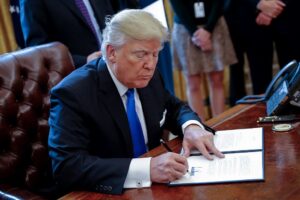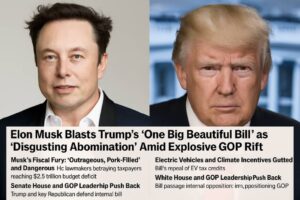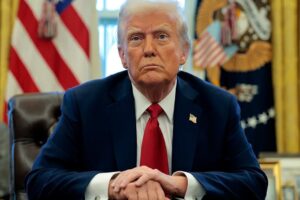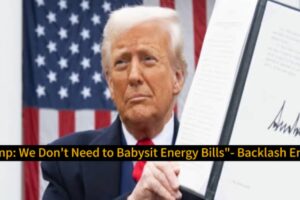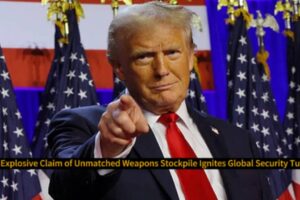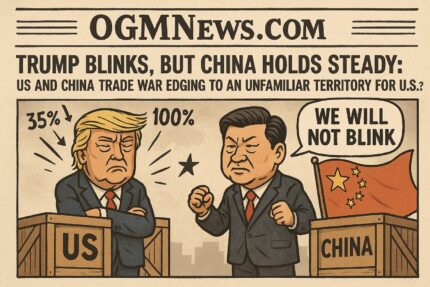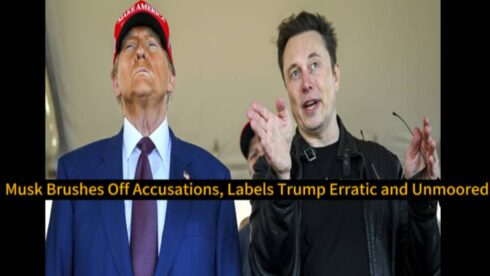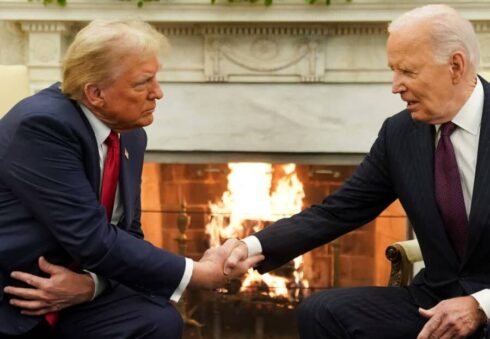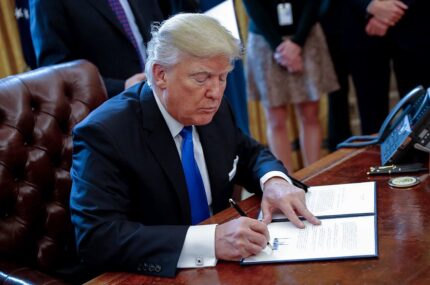US and China Trade War | The Trump administration appears to be reevaluating its hardline trade stance against China, with sources confirming a potential reduction in tariffs as part of efforts to de-escalate the prolonged trade war. The Wall Street Journal reports that tariffs—currently as high as 145% on a broad range of Chinese imports—could be slashed significantly, particularly for goods tied to U.S. national security.
Under this evolving proposal, tariffs on critical imports could drop to around 35%, while other goods may still face duties close to 100%. While no formal decision has been announced, the signals mark a notable shift in Washington’s tone and raise hopes for a partial thaw in bilateral economic tensions.
The timing is crucial. The U.S. economy has been showing signs of strain, and the political cost of a prolonged standoff is becoming harder to ignore. Treasury Secretary Scott Bessent recently declared the trade conflict “not sustainable,” hinting at a broader strategic recalibration within the administration.
US and China Trade War: Beijing Remains Resolute and “We Will Not Blink”
While Washington appears ready to dial down the economic confrontation, Beijing is standing firm. Chinese officials, state media, and policy institutions continue to project an image of strategic patience and unwavering resolve. “China will not compromise on sovereignty or strategic interests,” President Xi Jinping said during a recent address.
US and China Trade War | This sentiment was echoed in a front-page editorial in the People’s Daily, which stated unequivocally, “China will fight to the end if necessary. This is not a bluff.” The editorial was widely circulated and interpreted as a signal to both domestic and international audiences that China will not offer concessions under pressure.
Chinese ministries have also reiterated that retaliatory tariffs on U.S. goods will remain in place unless Washington offers what Beijing considers “substantive concessions.” For now, the message is clear: China is playing the long game and does not intend to blink.
Beijing Retaliatory Strategy: Targeted and Tactical in US and China Trade War
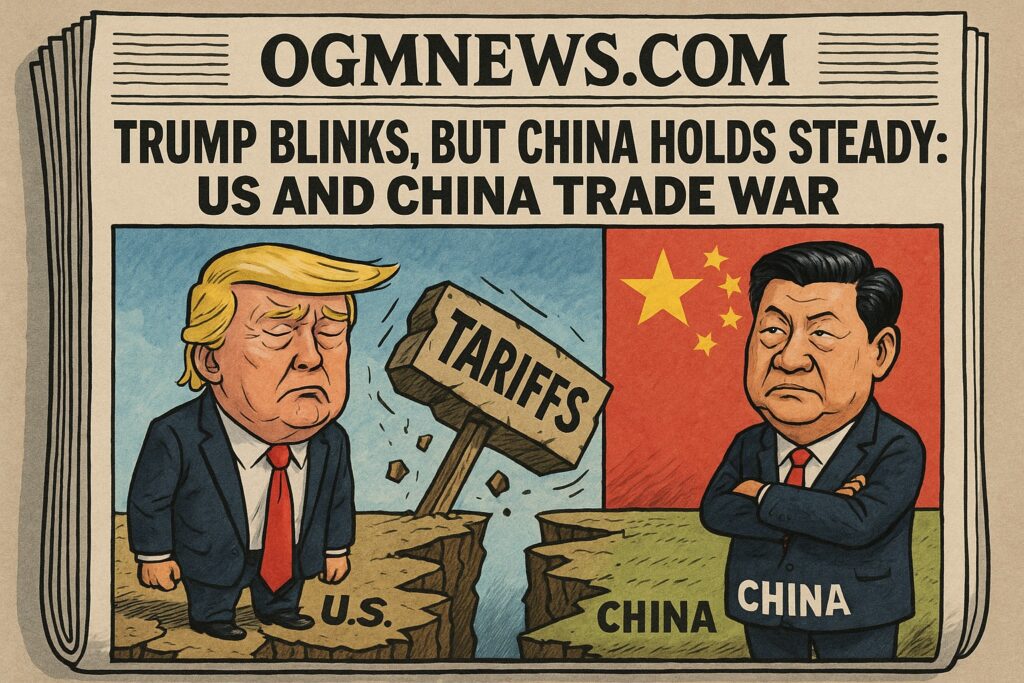
Beijing’s retaliation has not been haphazard. It has imposed a wide array of counter-tariffs, ranging from 10% to 25%, on hundreds of American products, including soybeans, cars, and energy goods. It has also taken strategic measures such as export controls on gallium and germanium—key elements in global tech manufacturing.
US and China Trade War | Additionally, China has initiated an antitrust investigation into Google, signaling a readiness to directly challenge U.S. corporate interests operating on Chinese soil. According to The Hill, these actions are designed to apply calibrated pressure while avoiding a spiraling escalation.
The clear message behind these moves is that China is not only responding in kind but doing so in ways that amplify strategic leverage without crossing the line into irreversible damage.
US and China Trade War: Financial Markets Respond to Easing Tensions
Financial markets responded immediately to news of a potential tariff rollback. The S&P 500 jumped 2.5% following Secretary Bessent’s comments, with tech stocks and consumer goods sectors leading the rally. Investors appeared buoyed by the possibility that trade tensions—long a drag on global market confidence—may soon abate.
The rally also suggests that Wall Street views tariff de-escalation not as a retreat, but as a pragmatic pivot. “Markets are celebrating sanity,” remarked one Bloomberg analyst. “This isn’t about weakness; it’s about strategic rebalancing.”
The surge comes after months of volatility driven by tariff announcements, retaliations, and unpredictable policy moves. For investors, the prospect of renewed stability—even if temporary—is a welcome development.
China’s Economic Insulated from US and China Trade War |
To absorb the shockwaves of the trade conflict, China has deployed a sophisticated economic toolkit. Its central bank has slashed interest rates and infused liquidity into the banking system, while the government has rolled out targeted subsidies to support exporters affected by U.S. tariffs.
Moreover, Beijing has taken measures to control the exchange rate of the yuan, ensuring Chinese exports remain competitive in international markets. Bloomberg recently reported that these buffer strategies have created a “safety cushion” that’s helped the country weather tariff-related tremors.
By stabilizing domestic conditions, China signals its readiness to endure a protracted conflict without succumbing to external pressure—a testament to its long-term planning and policy discipline.
Strategic Realignment, Not Capitulation
US and China Trade War | President Trump has publicly maintained that while tariffs may be reduced “substantially,” they will not be entirely eliminated. In remarks aimed at balancing domestic expectations and diplomatic finesse, he emphasized maintaining “a cooperative relationship” with Chinese President Xi Jinping.
This nuanced tone reflects a growing awareness in Washington: complete economic decoupling may be both politically and economically untenable. Instead, the focus appears to be shifting toward a calibrated reset—one that addresses national security concerns while easing the economic drag.
For Trump, the shift is less about giving in and more about reasserting control over a trade policy that has drawn criticism for its volatility and impact on American businesses.
What Lies Ahead: Diplomacy or Deadlock?
US and China Trade War | The situation remains fluid. While the Trump administration’s latest signals point toward de-escalation, formal negotiations have yet to begin. China, for its part, has shown no signs of backing down and continues to demand concrete actions rather than verbal overtures.
Analysts believe the next few weeks will be crucial. If Washington follows through with tariff reductions, and if Beijing reciprocates with market-friendly reforms or eased restrictions, a breakthrough may be possible. Otherwise, the trade war could enter yet another cycle of retaliation and entrenchment.
For now, the world watches as two global powers navigate a complex blend of economic nationalism, political optics, and strategic rivalry—with far-reaching consequences for the global economy.



